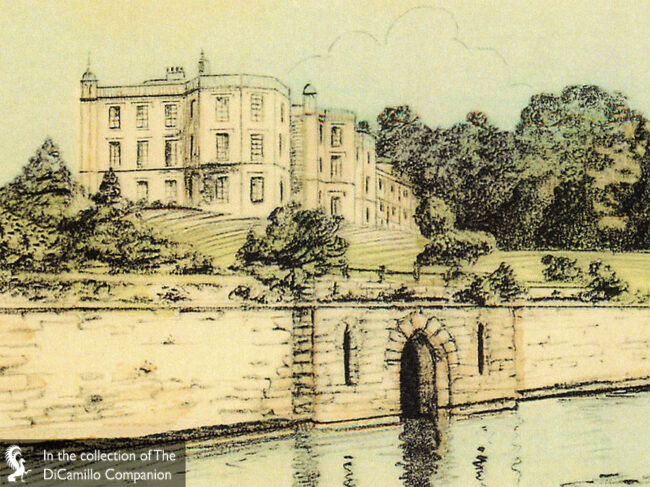
The house from a circa 1911 postcard
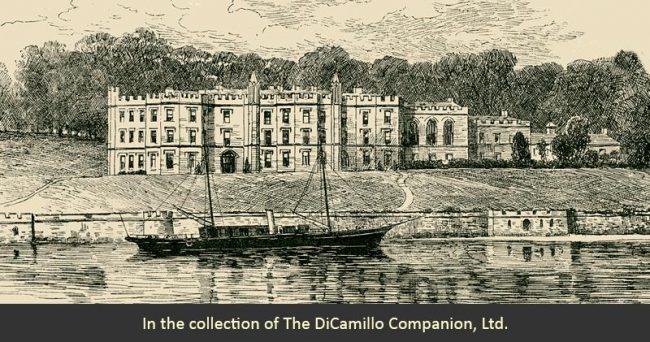
The house from the Dec 26, 1885 issue of "The Illustrated Sporting and Dramatic News"
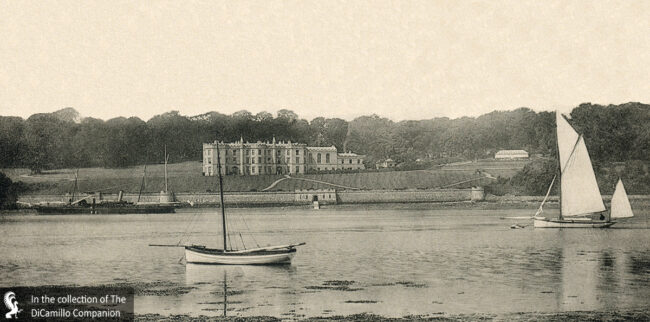
The house from a 1903 postcard. That could possibly be the Dancing Marquess's yacht at the extreme left.
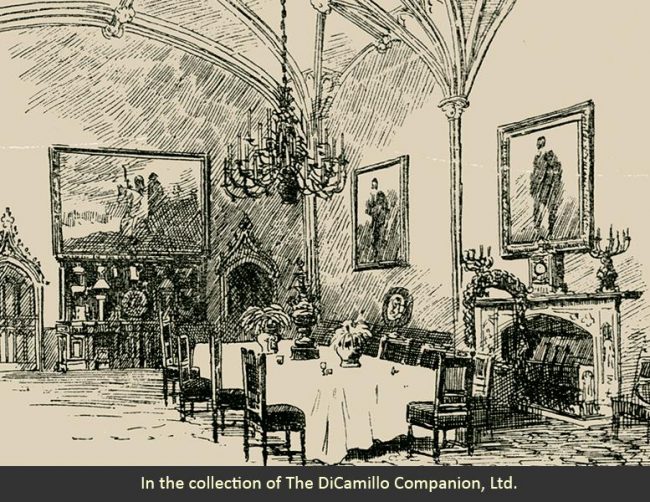
The dining room from the Dec 26, 1885 issue of "The Illustrated Sporting and Dramatic News"

Rex Whistler's trompe-l’œil mural on one of the walls of the dining room. This image is in the public domain.
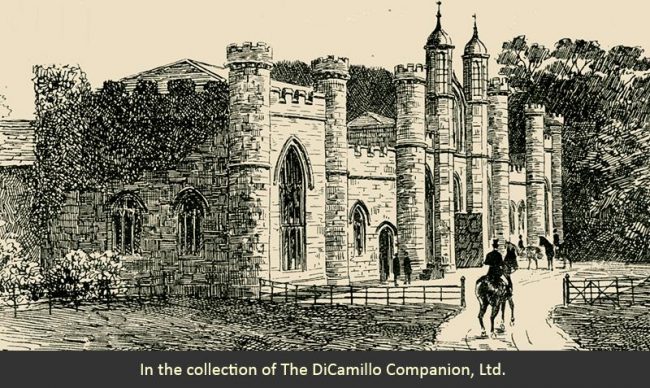
The stables from the Dec 26, 1885 issue of "The Illustrated Sporting and Dramatic News"
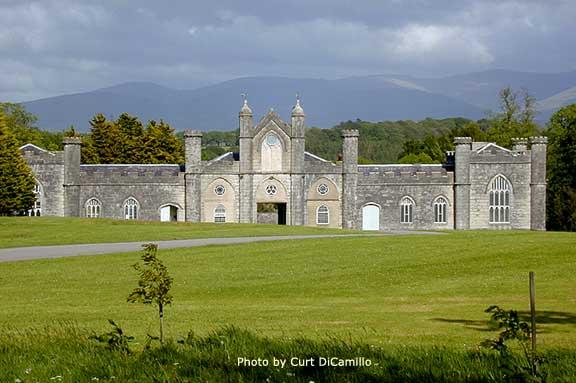
The stables in the early 21st century
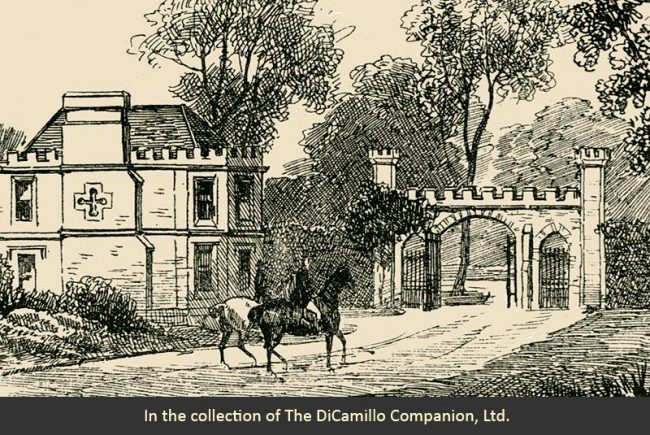
The main gatehouse from the Dec 26, 1885 issue of "The Illustrated Sporting and Dramatic News"
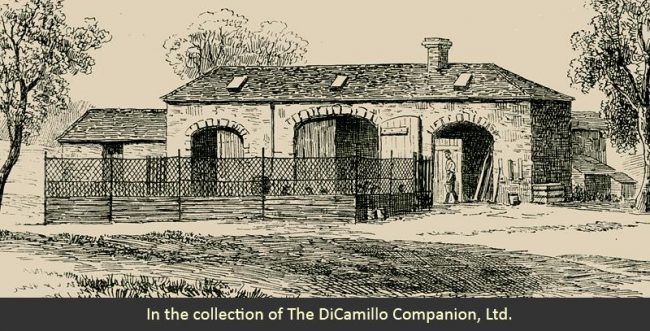
The kennels from the Dec 26, 1885 issue of "The Illustrated Sporting and Dramatic News"
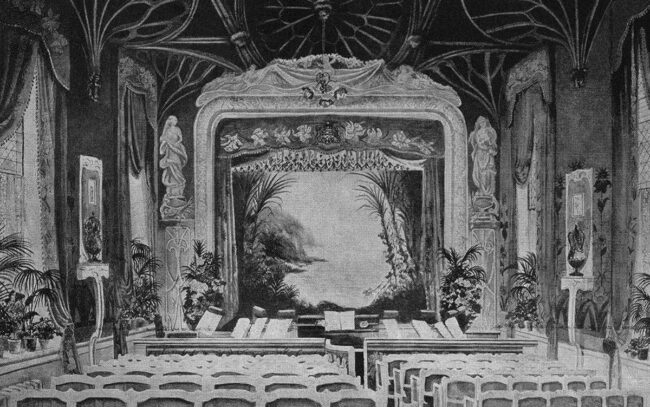
A circa 1900 photograph of the Gaiety Theatre, formerly the Plas Newydd chapel. This image is in the public domain.
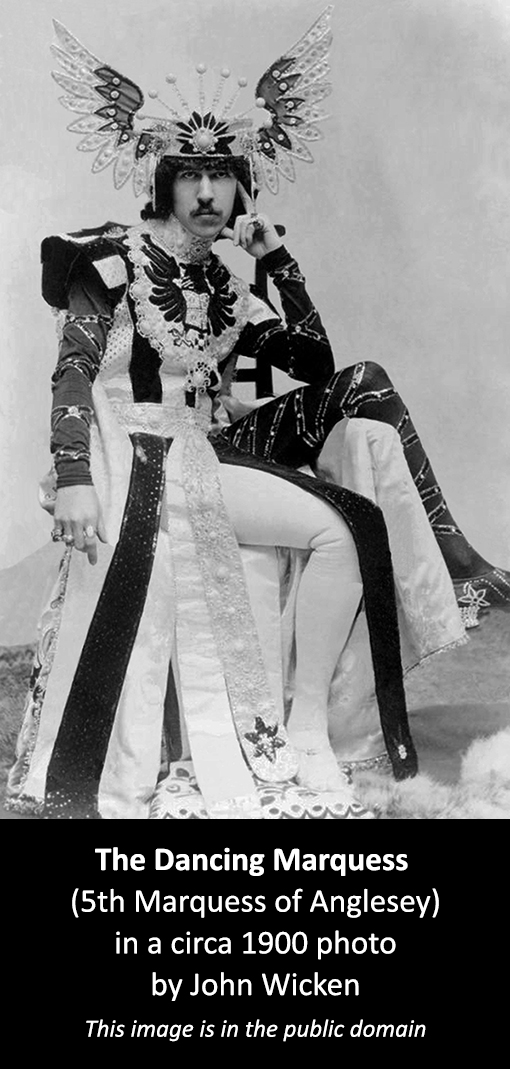
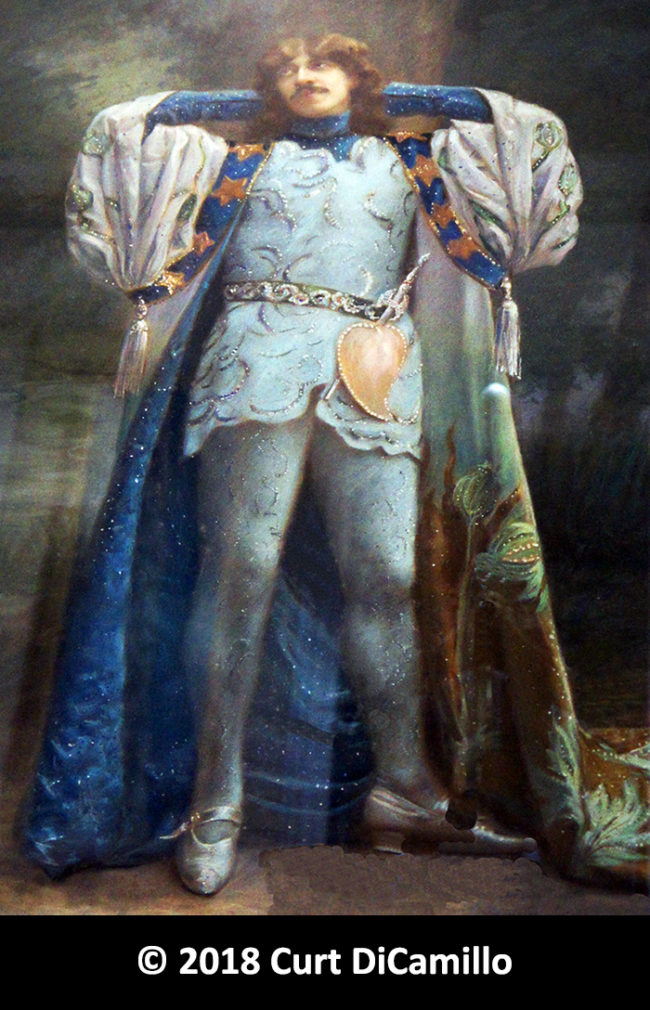
Portrait of the 5th Marquess of Anglesey ("The Dancing Marquess) in one of his theatrical Butterfly Dance costumes. Today in the collection of Sledmere House.
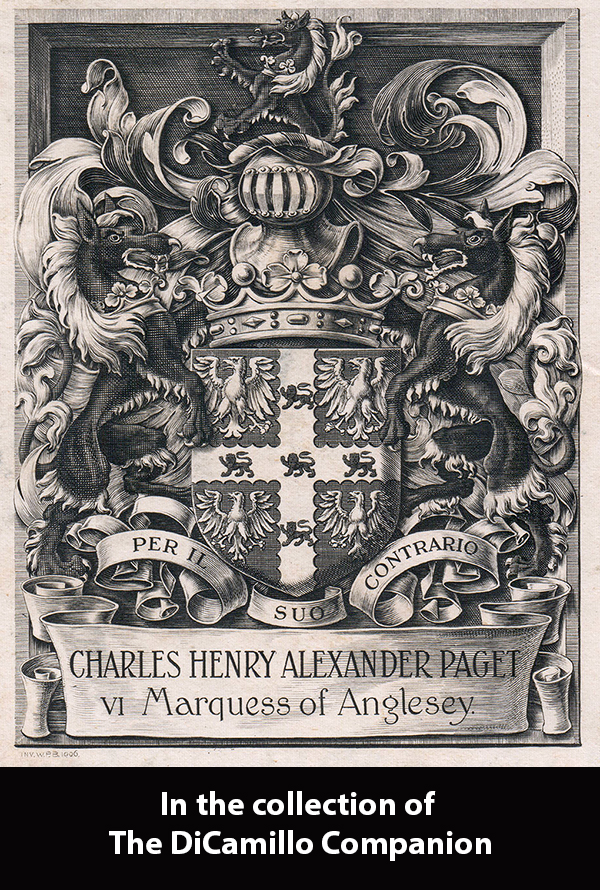
Bookplate of the 6th Marquess of Anglesey, engraved in 1906 by William Phillips Barrett.
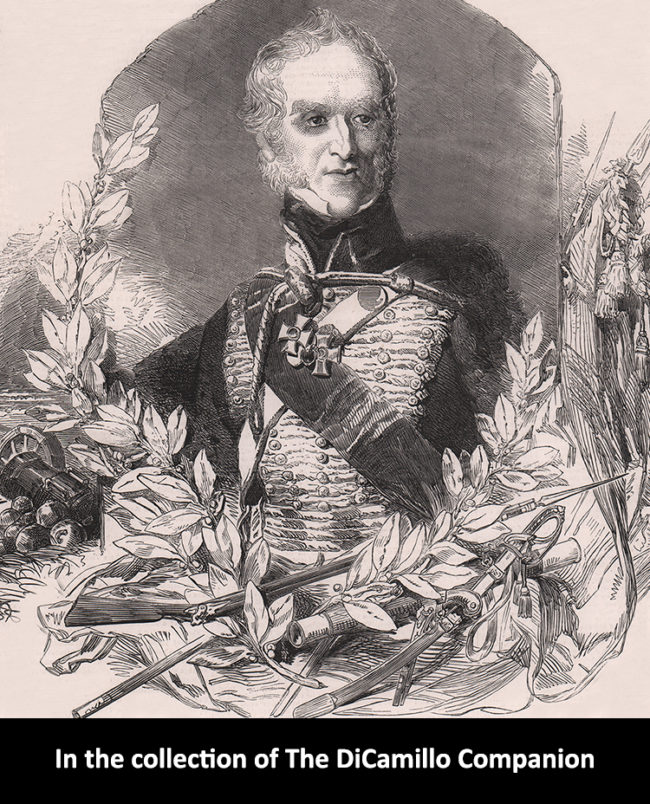
The 1st Marquess of Anglesey from an 1854 issue of "The Illustrated London News"
Earlier Houses: There was an earlier 13th century house called Llwyn-y-Moel on the site, elements of which were probably incorporated into the current house.
Built / Designed For: Robert Griffith
House & Family History: Plas Newydd was one of the ancestral seats of the Paget family, earls of Uxbridge and marquesses of Anglesey. The family fortune was derived from lead and coal mines in Staffordshire and North Wales, and from a storied copper mine on the Isle of Anglesey. Though the house has a 16th century core, Plas Newydd, as seen today, is mostly the result of 18th and 19th century alterations and rebuildings in both the classical and Gothic styles. The house is noted for its lovely interiors by Sybil Colefax and its astonishing murals by Rex Whistler, all executed in the 1930s. The most famous resident of Plas Newydd was certainly the 5th Marquess of Anglesey, who was seated here in the late 19th and early 20th centuries. More commonly known as “The Dancing Marquess,” the 5th Marquess (see "Images" section) was an over-the-top dandy, whom the “The Daily Mail” called “A man who makes Elton John look [like] the height of modesty and restraint.” Served by three valets and a full-time hairdresser, the marquess's bedroom was supposedly draped in mauve velvet and furnished with silver and gold decorative arts. And this is just the first hint of luxurious lifestyle. He was known by Londoners for walking along Piccadilly wearing dozens of rings on his fingers, rouge on his face, and carrying a snow white, pink-ribboned, perfumed poodle under his arm. Lord Anglesey fancied himself a performance artist, which is why he converted the chapel at Plas Newydd into a theater (modeled on the Dresden Opera House) called The Gaiety. Here, employing the finest professional actors from London, Lord Anglesey would stage a huge variety of plays, from Shakespeare to the works of Oscar Wilde. The only thing he required for each performance was time when the actors stood aside to allow him to have the stage to himself to perform his “Butterfly Dance.” This sinuous and suggestive dance (he waved a robe of white silk like wings) made Lord Anglesey so famous that he mounted a European tour to showcase his talents. Accompanied by five trucks that carried scenery, equipment, and a staff of 50 (including his own orchestra), the Dancing Marquess toured the continent in an automobile with Louis XV style mahogany interiors and an exhaust system whose discharge was perfumed with patchouli. In the middle of this entourage was Lord Anglesey, who sat in his luxurious automobile carrying jewels worth £15 million (in 2016 inflation-adjusted values). The famously eccentric Lord Berners attended one of Lord Anglesey's performances in Munich and described what he saw: the Dancing Marquess “...came between that of a lady with performing pigeons and a company of acrobats. The theatre was darkened. There was a roll on the drums and the curtain went up on Lord Anglesey clad in a white silk tunic, a huge diamond tiara on his head, glittering with necklaces, brooches, bracelets, and rings. He stood there for a few minutes motionless, without any mannequin gestures of display. Then the curtain went down again period…the German audience seemed a little disconcerted by the manifestation of British eccentricity.” The Dancing Marquess was famously described by Clough Williams-Ellis as “...a sort of apparition—a tall, elegant, and bejeweled creature, with wavering elegant gestures, reminding one rather of an Aubrey Beardsley illustration come to life.” It’s probably not surprising that this young man burned brightly for a very short time. He died in 1905 (probably of TB) at the age of 29, having been marquess for just seven years. In that time he changed the name of the house to Anglesey Castle and spent millions of pounds (in today’s values), almost bankrupting his family. After his death, the Dancing Marquess’s family did everything in their power to erase his memory. It wasn’t until the early 21st century that this unique man came to be reassessed and appreciated. His renaissance reached its zenith in 2007, when the Welsh playwright and actor Marc Rees staged “Gloria Days,” a play about the Dancing Marquess and his amazing life. Rees, who portrayed the marquess in the play, said it was “…an occasion to honor an extraordinary Welsh historical figure who challenged and subverted Edwardian notions of class, gender, decorum, and theatrical propriety.” The 7th Marquess of Anglesey donated the house and estate to the National Trust in 1976.
Collections: Plas Newydd contains Rex Whistler's largest painting, an enormous mural (in reality, a painting executed on one huge canvas—58 feet long by 12 feet high, the largest single canvas in Britain—made for Whistler on a special French loom). The painting (see "Images" section), a stunning Georgian landscape fantasy dotted with classical architecture and the Snowdonia mountains, covers an entire wall in the dining room and was done between 1936 and 1938 for the 6th Marquess of Anglesey, whose family Whistler was exceptionally close to. Plas Newydd also houses an exhibit of Whistler's work, the only permanent exhibition dedicated to the work of this unique talent. In May of 2006 the National Trust purchased from the Whistler family an important collection of paintings and drawings by Rex Whistler. Today housed at Plas Newydd, the collection includes 50 items and includes the original illustrations for "The Last of Uptake," costume designs for "The Tempest," proof editions of Whistler's illustrations for "Gulliver's Travels," his paint box, brushes, and palette, plus posters, designs for book jackets, and a wall training chart, designed by Whistler for the men of his tank regiment during World War II. Rex Whistler’s immense talent was cut tragically short when he was killed in action in Normandy at the age of 39 during World War II. A member of the chic London group of Bohemian aristocrats and socialites known as the “Bright Young Things,” Whistler, much like the Dancing Marquess, lived a brief, but brilliant life. Onsite there is also a military museum with relics of the 1st Marquess of Anglesey and the Battle of Waterloo, where Lord Anglesey fought bravely (and lost a leg) serving under the Duke of Wellington. In 1904, the year before his death, the 5th Marquess of Anglesey was forced by his creditors to hold an enormous auction of his possessions. Called “the auction of the century,” it featured 17,000 lots and took place over 40 days and featured, among other luxuries, the world’s largest collection of walking sticks, the handles encrusted with emeralds, rubies, diamonds, and sapphires. The local newspaper said of the auction of the marquess’s footwear, “...it was a complete collection of everything that could be strapped, buckled, or laced upon the foot of a man.” In 2020 the London jewelers Hancocks had for sale a Victorian 100-carat diamond tiara that was probably worn by the Dancing Marquess when he performed his famous Butterfly Dance. The tiara, which has a detachable rivière necklace, was also worn by the 6th Marchioness of Anglesey at the coronation of George VI in 1937.
Comments: Plas Newydd is frequently called the most beautiful house in Britain.
Garden & Outbuildings: The estate, which covers 9,510 acres, contains a spring garden and an Australasian arboretum.
Chapel & Church: The Gothick style chapel, built 1805-09 to the designs of Joseph Potter, was demolished in the 1930s. In the late 19th century the 5th Marquess of Anglesey (The Dancing Marquess) converted the chapel into a theater (called The Gaiety) that was modeled on the Dresden Opera House. The Dancing Marquess put on plays in the theater, importing the best talent from London and paying the actors exorbitant salaries. Most famously, at every performance the marquess would, at some point, have the stage to himself to perform his “Butterfly Dance,” a sinuous, sexy, snake-like dance that caused many tongues to wag.
Architect: Joseph Potter
Date: Circa 1796Architect: John Cooper
Date: 1783-85Architect: James Wyatt
Date: Circa 1796John Preston (J.P.) Neale, published under the title of Views of the Seats of Noblemen and Gentlemen in England, Wales, Scotland, and Ireland, among other titles: Vol. V, 1822.
Country Life: XCIX, 342 [Rex Whistler Room], 1946. CXVIII, 1198 plan, 1252, 1955. CLIX, 1686, 1976. CLX, 18, 1977. CLXII, 286 [Rex Whistler], 1977.
Title: Biographical Dictionary of British Architects, 1600-1840, A - SOFTBACK
Author: Colvin, Howard
Year Published: 1995
Reference: pgs. 269, 775, 1118
Publisher: New Haven: Yale University Press
ISBN: 0300072074
Book Type: Softback
Title: Country House in the 1980s, The
Author: Young, John
Year Published: 1981
Reference: pgs. 91-92
Publisher: London: George Allen & Unwin
ISBN: 0047200227
Book Type: Hardback
Title: National Trust Handbook 2000, The
Author: NA
Year Published: 2000
Publisher: London: The National Trust
ISBN: NA
Book Type: Softback
House Listed: Grade I
Park Listed: Grade I
Past Seat / Home of: SEATED AT EARLIER HOUSE: Gwilym ap Griffith, 15th century. SEATED AT CURRENT HOUSE: Robert Griffith, early 16th century. Nicholas Bagenal, 16th century. Lewis Bayly, 17th century; Edward Bayly, 18th century; Sir Nicholas Bayly, 2nd Bt., 18th century; Henry Bayley-Paget, 1st Earl of Uxbridge, 18th century; Field Marshal Henry William Paget, 1st Marquess of Anglesey, 19th century; Henry Cyril Paget, 5th Marquess of Anglesey, 1898-1905; George Charles Henry Victor Paget, 7th Marquess of Anglesey, until 2013 (the last member of the family to live in the house).
Current Ownership Type: The National Trust
Primary Current Ownership Use: Visitor Attraction
House Open to Public: Yes
Phone: 01248-714-795
Fax: 01248-713-673
Email: [email protected]
Website: https://www.nationaltrust.org.uk
Historic Houses Member: No